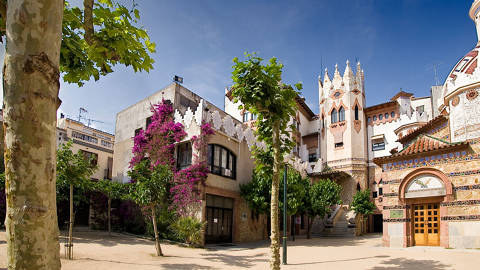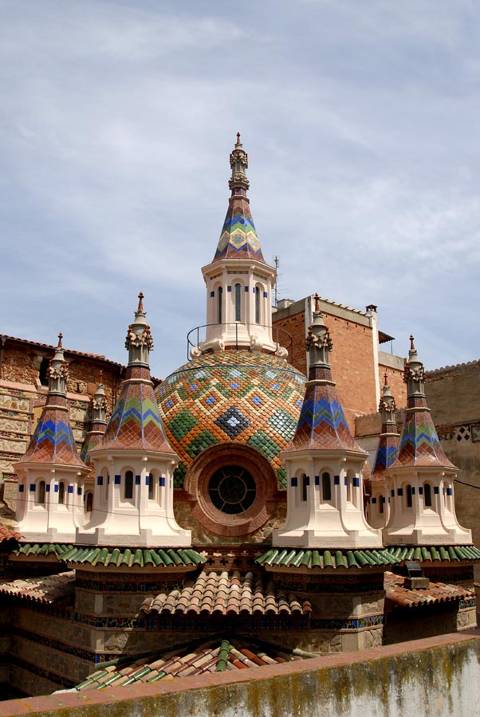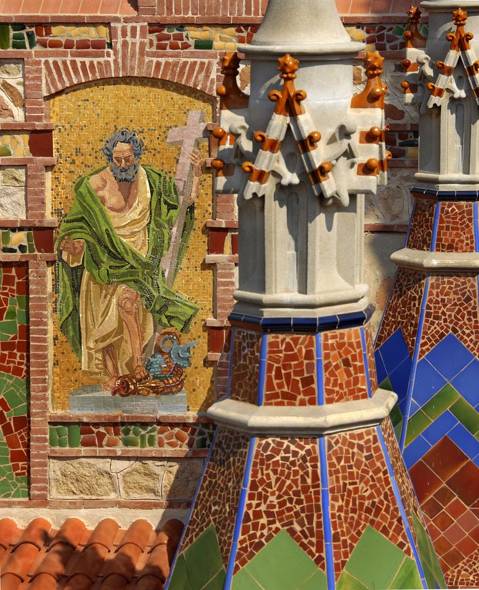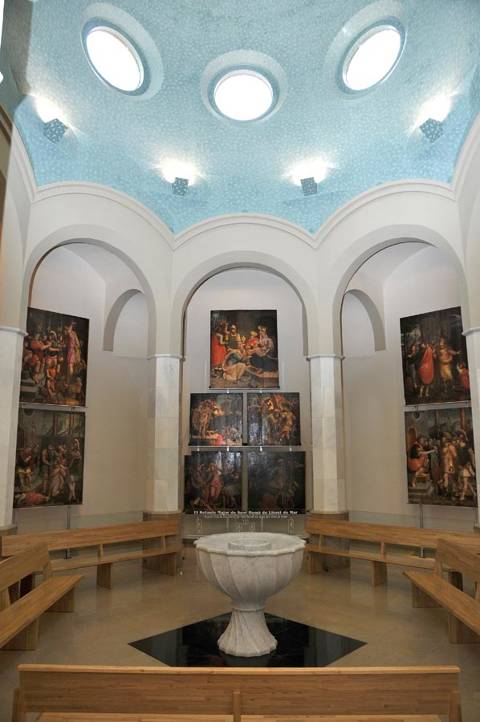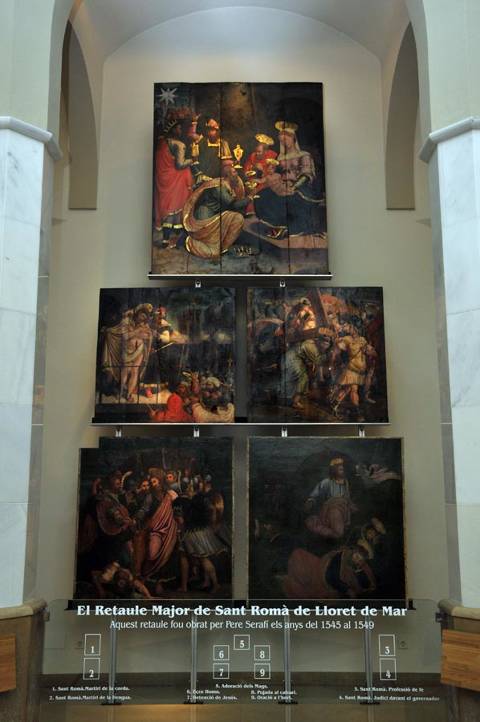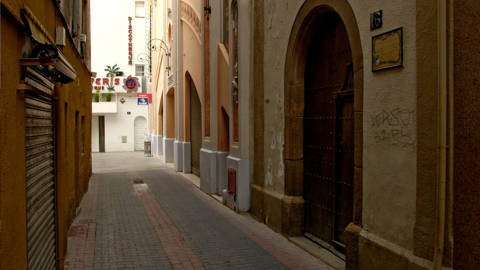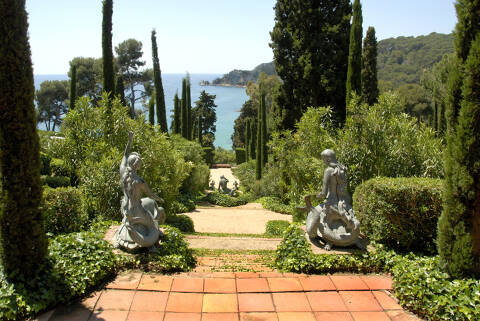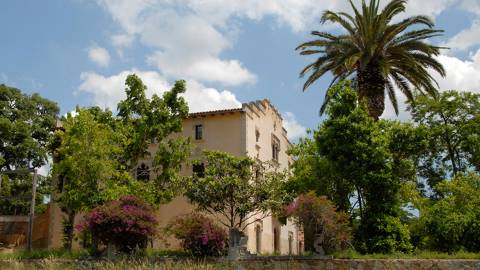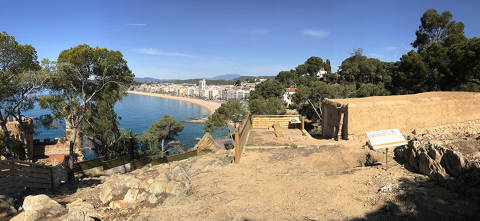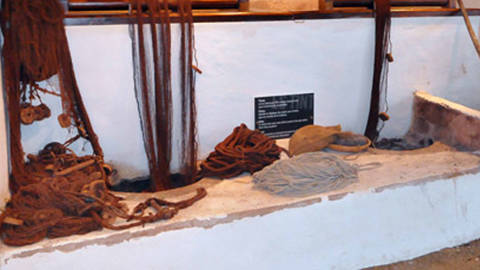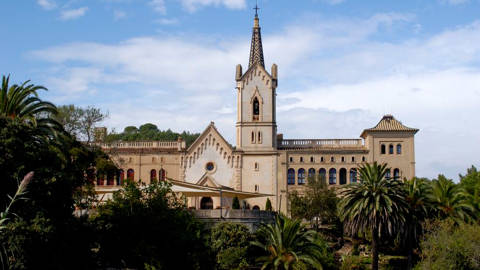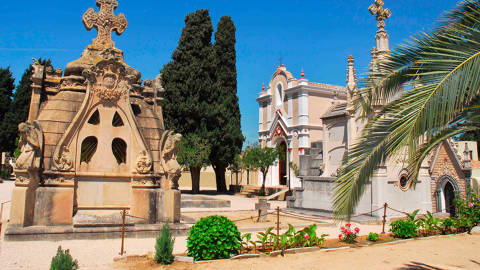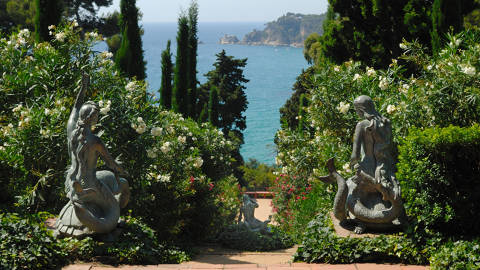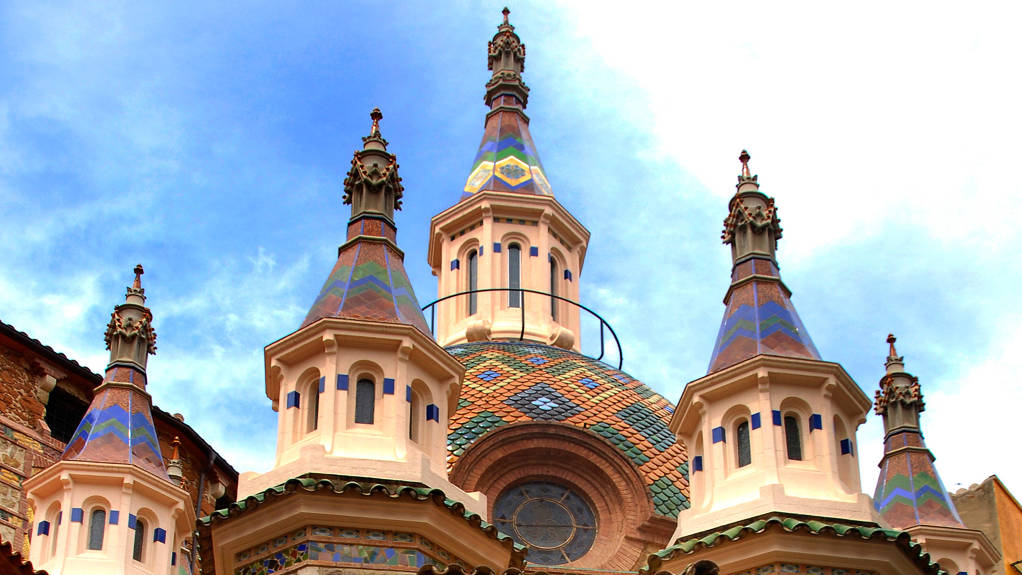
A legacy of modernist art
Church of Sant Romà
When Lloret consisted of a scattering of farmhouses and huts in the 11th century, the parish church was located inland. The function of parish church was served by the chapel known today as the Chapel of Les Alegries. Well into the 16th century, a new site was chosen for the parish church: the esplanade close to the sea known as Sa Carbonera.
The church was originally constructed in the Catalan Gothic style between 1509 and 1522 with a single nave and had fortifications (e.g. portcullis). From the available information on the various altars and altarpieces, it can be deduced that other rooms, and above all side chapels, must have been built over the rest of the 16th century and during the 17th century. The painters Pere Serafí (known as the Greek) and Jaume Fontanet were commissioned by the town councillors of Lloret to produce a reredos for the main altar in 1541. It cost 1,300 lliures barcelonines (Barcelona pounds), the final instalment of which was paid in October 1559. This reredos was identified with the pieces found in the church loft. The items stored in loft were saved from the burning of the church in 1936 during the Spanish Civil War. The interior of the nave is of fine proportions and the structures of the presbytery and the vaulting were well suited to being painted and turning this church into a jewel of modern art. The builders were Bartolomé Ruffi, father and son, and Pere Capvern, master builders and stonemasons from Girona. The works cost 3,000 lliures catalanes (Catalan pounds). The two modernist-style side chapels (Baptistery and Holiest Sacrament) were built by Bonaventura Conill i Montobbio in 1916. There are also examples of modern art in the church, for example, the stone image of Our Lady of Loreto and a carving of the Holy Christ, both produced by the sculptor Monjo.


